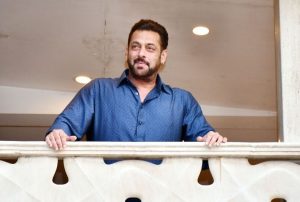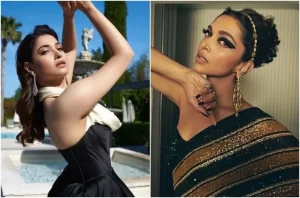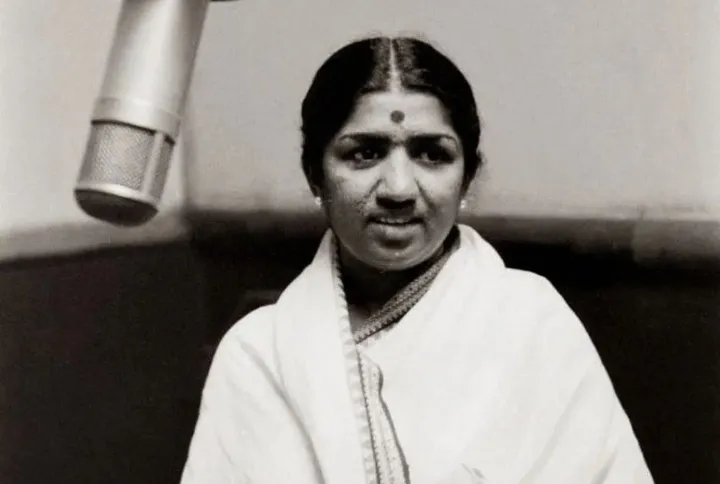
India lost its voice yesterday while the world bid adieu to one of it’s brightest and biggest stars. Bharat Ratna Lata Mangeshkar might have left the mortal world but her voice will reverberate through the universe for eternity. It’s unfathomable for me to even imagine the illustrious career that the Nightingale of India led, which spanned for about eight decades. Her work has been an unforgettable and important part of my life.
Mangeshkar began her singing career at the mere age of 13 in the year 1942 with Natali Chaitraachi Navalaai in the Marathi movie Pahili Mangalaa-gaur. The following year she made her Hindi singing debut with Mata Ek Sapoot Ki Duniya Badal De Tu, again for a Marathi film Gajaabhaau. To put it in perspective, it means that the songstress’ career was longer than the existence of Independent India. An unimaginable feat indeed!
The legend was mentored by Master Vinayak before his death in 1948, and following that, she went under the wings of the great music director, Ghulam Haider. When a producer denied to work with the young Mangeshkar at that time, Haider promised him that in the coming years producers and directors would “beg her” to be a part of their projects. And his words did come true, as for the next six decades, Lata ji ruled the Bollywood industry.
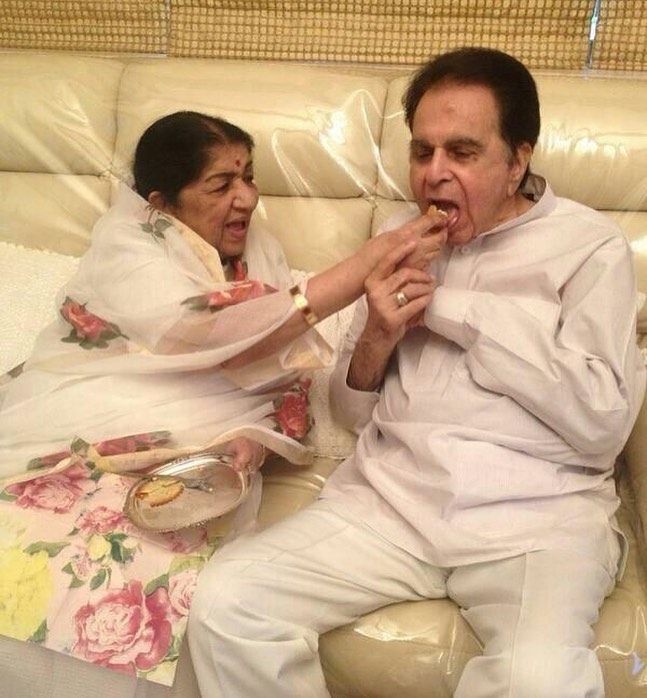 Lata Mangeshkar with Dilip Kumar (Source: instagram | @lata_mangeshkar)
Lata Mangeshkar with Dilip Kumar (Source: instagram | @lata_mangeshkar)
In the late actor Dilip Kumar’s autobiography, Lata ji recalled how in her first meeting with the maverick in 1947, he made a remark on her Urdu diction, saying that since she was Maharashtrian, he feared her pronunciation might disrupt the listening pleasure of the audience. That remark made her introspect and work on her Urdu diction, eventually resulting in the chartbuster Pyaar Kiya To Darna Kya in Kumar’s iconic Mughal-e-Azam.
While the nation was divided between being the fans of Kishore Kumar and Mohammad Rafi amongst the male playback singers, Lata ji was the sole queen amongst the females, and she enjoyed that supremacy for decades to come. The only songstress to have come close to that love and appreciation was her own sister Asha Bhosle. The Mangeshkar sister duo made for one of the strongest and most worshipped music family in the whole industry.
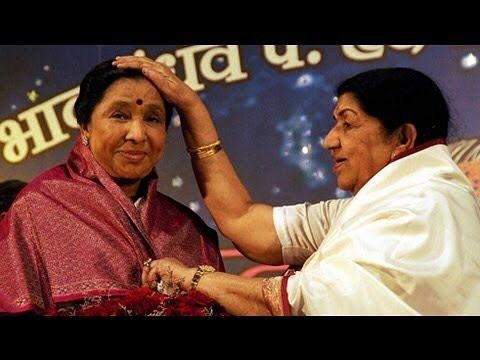 Sisters Asha Bhosle and Lata Mangeshkar (Source: Instagram | @asha.bhosle)
Sisters Asha Bhosle and Lata Mangeshkar (Source: Instagram | @asha.bhosle)
For the next several decades, Lata ji mesmerized the audiences with her soulful voice in chartbusters like Ajeeb Dastan Hai Ye, Lag Jaa Gale, Mora Gora Ang Layi Le, and thousands others, which if I start to list down, the time may run out but not her list of songs. Her voice even uplifted a lot of failed movies at the box office, and their music is still remembered by the audience. She even changed the way Indian music concerts were perceived in the West.
Lata ji was not only loved and adored in India but across the border as well. During her illustrious career, she received a lot of compliments that can never be forgotten, but the one that I associate with her the most is the one that the then Prime Minister Pandit Jawaharlal Nehru bestowed on her. In the wake of the 1962 Sino-Indian conflict, Lata ji had crooned the patriotic anthem, Ae Mere Watan Ke Logon, and when she performed it at Mumbai’s Chowpatty, Nehru ji was moved in such a way that he told her, “Beti, tumne to rula diya.” And that’s the feeling every listener gets even today whenever we hear that soulful and piercing song. Even the late Ghulam Ali Khan complimented her voice saying, “Kambakht, kabhi besuri nahi hoti.”
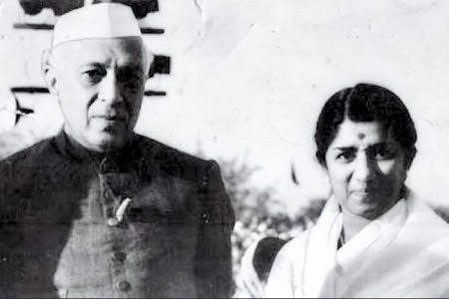 Former PM Pandit Jawaharlal Nehru with Lata Mangeshkar (Source: Instagram | @lata_mangeshkar)
Former PM Pandit Jawaharlal Nehru with Lata Mangeshkar (Source: Instagram | @lata_mangeshkar)
For her contribution to Indian cinema, Lata ji was honoured with the Padma Bhushan, third-highest civilian award in India in 1969, with the Dada Saheb Phalke Award, the highest honour in Indian cinema in 1989, followed by the second highest civilian award in India, Padma Vibhushan in 1999 and two years later with the highest civilian award, Bharat Ratna. She even received the National Film Award for playback singing in 1972 for Parichay, in 1974 for Kora Kagaz and in 1990 for Lekin…
Lata ji was bestowed with the Best Female Playback Singer award at the prestigious Filmfare Awards four times, and her protest to sing her song Rasik Balma at the event in 1956 was actually instrumental in the creation of the category. But after dominating it for years, in 1970 Lata ji made an unusual gesture of withdrawing her name from consideration thereafter so as to promote fresh and new talents. Still, she was given a Lifetime Achievement Award in 1993, a special award for Hum Aapke Hain Koun..!’s Didi Tera Dewar Deewana in 1994 and another special award in 2004 as the Filmfare Awards completed their 50 years.
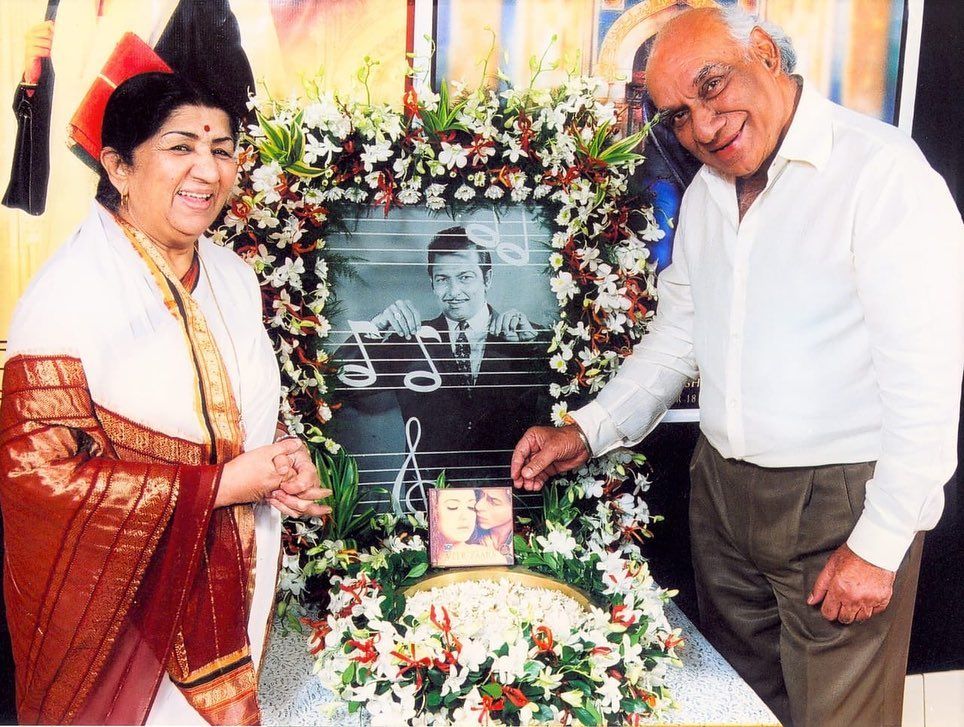 Lata Mangeshkar with Yash Chopra (Source: Instagram | @lata_mangeshkar)
Lata Mangeshkar with Yash Chopra (Source: Instagram | @lata_mangeshkar)
I might not have lived to see the time when Lata ji was the dominant force in singing, but I started the millennium by listening to her voice in Mohabbatein. As she gave voice to Aishwarya Rai Bachchan in Humko Hum Hi Se Chura Lo, I couldn’t believe that someone could move me with with just their singing. She then continued that affect on me with the album of Yash Chopra’s Veer-Zaara. Tere Liye and Hum To Bhai Aise Hain still reverberate through my mind and ears whenever I go down the memory lane. But, a song that will be etched in my memory crooned by her will be Luka Chupi from Rang De Basanti. Her piercing voice and AR Rahman’s magical music and sound just strum on all the strings in my heart every time I hear it. This song is sheer magic even today.
What made Lata ji so special for people of my generation is that she always walked with time and stayed in touch with the current world. She joined Instagram and Twitter in her ’80s, and was more active on those platforms than I am even today. I remember her starting all her tweets with her signature ‘Namaskar’ and sticking to Hindi as her language of choice. Come what may, she would take to Twitter to wish people from the industry, remember her colleagues, appreciate new talents or even share some stories from her past, and now with her gone, I will miss that.



